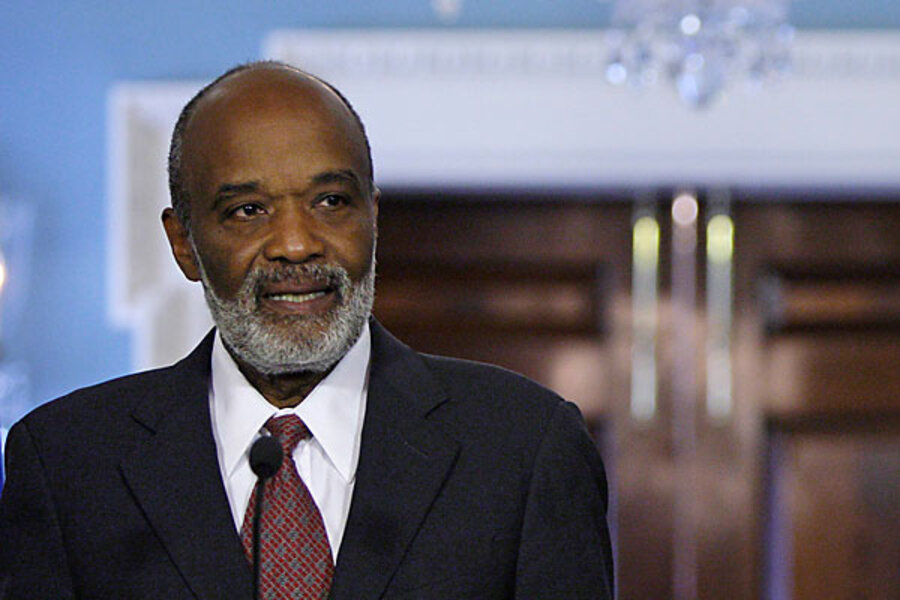Haiti earthquake: As Obama meets Préval, US quietly pulls out of Haiti
Loading...
| Port-au-Prince, Haiti
As President Obama hosts Haitian President René Préval at the Oval Office today, the two will discuss how the US can best help rebuild the impoverished Caribbean country after the Jan. 12 Haiti earthquake – which the Inter-American Development Bank called “the most destructive natural disaster in modern times” – killed more than 220,000 Haitians and left more than 1 million homeless.
Meanwhile, the US is quietly, but quickly drawing down the number of troops it sent to Haiti in the quake's wake.
Over the past few weeks, the US has cut the number of troops from 20,000 to some 6,000 on the ground and another 3,000 at sea. The USS Comfort, a naval hospital ship that arrived days after the quake and treated thousands of Haitians, headed to Baltimore on Tuesday, ending its role in Operation Unified Response-Haiti.
IN PICTURES: American troops in Haiti
“Our mission was tied to our ability to facilitate humanitarian aid and disaster relief,” said Public Affairs Officer Col. Billy J. Buckner. “We’re adjusting our forces so that we can continue to do that – helping to secure sites for shelter and food distribution. So far the situation has been calm and stable.”
But last week's downpours in Haiti increased concern that time is running out for the 1 million homeless to get shelter before the rainy season begins in April. And many Haitians are concerned that the withdrawal of American troops shows a waning interest in helping Haiti, and that their absence will leave people vulnerable to gangs and street violence.
“It’s not time for them to leave yet,” says Reynold Daughin, a US resident who lost his wife and two-year-old child in the quake. Mr. Daughin is staying in a tent camp downtown, where he has set up a screen and speakers to show films. “I’m trying to provide something positive for people, so that they have something entertaining to do at night. Things may look stable, but they’re not. Anything can happen.”
Reynold Richet lives in a nearby tent camp in the Bel Aire section of Haiti's capital, Port-au-Prince. He also thinks it’s too early for the Americans to leave.
When US troops came in 1994 to facilitate the return of ousted President Jean Bertrand Aristide, they headed up the UN-led peacekeeping force. “Back then they built bridges and schools,” he said. “Why aren’t they doing that now when the situation is far worse?”
The US mission was, and still is, focused on humanitarian relief. Although troops helped open the sea and airport after the earthquake, and were ready, if needed, to prevent an outbreak of violence following the quake, there was no need to use them in that capacity.
As they draw down, they are training other troops to take over their posts. Most recently they passed off a distribution site to Brazilian and Jordanian UN troops without incident. Other organizations, such as the International Federation of Red Cross and Red Crescent Societies (IFRC), has not needed military protection for its distributions, but the UN reported that a food convoy was looted last week en route to the capital.





